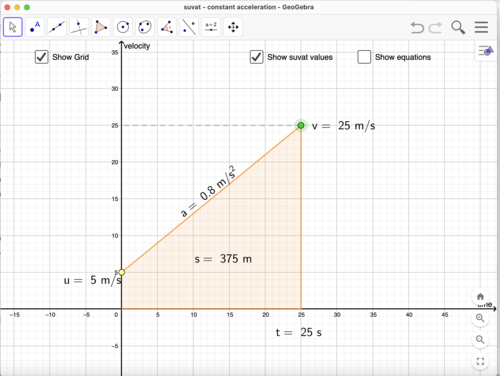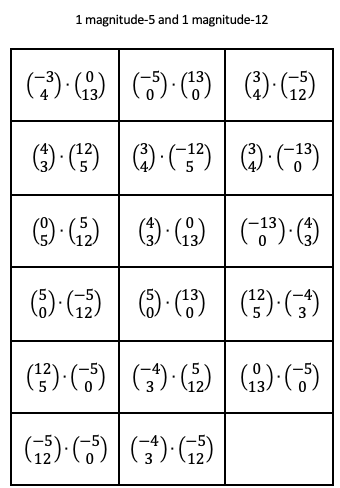suvat - Constant Acceleration Formulae
The applet above shows a velocity-time graph for an object with constant acceleration.
1. There is a full screen button in the bottom-right corner of the applet. You can move the position of the axes and zoom in and out. Try moving the yellow and green spots around with and see what happens.
2. Find the Distance / Displacement checkbox. Model a situation where these values are:
(i) different but have same magnitude,
(ii) different in magnitude.
3. Make sure the suvat values are displayed - look for the Show / hide suvat values checkbox. Can you use the graph to check your answers to Ex 1C?
4. Find the Show Equations checkbox. This will reveal a slider for selecting one of the five suvat equations. Notice that each equation uses 4 of the 5 suvat values. For each equation, which term is not included?
5. Notice how the first two equations come from from the gradient of the line and area of the trapezium contained between the line and the x-axis. Can you use these two equations to derive the other equations?
6. An object moves with an acceleration which is not constant. Consider these three cases:
(a) the acceleration increases throughout the motion
(b) the acceleration decreases throughout the motion
(c) the acceleration is a positive constant value, then zero, then a negative constant value
In each case, how would the shape of the graph differ from the one above? In what way would the calculated values be affected?




Comments
Post a Comment